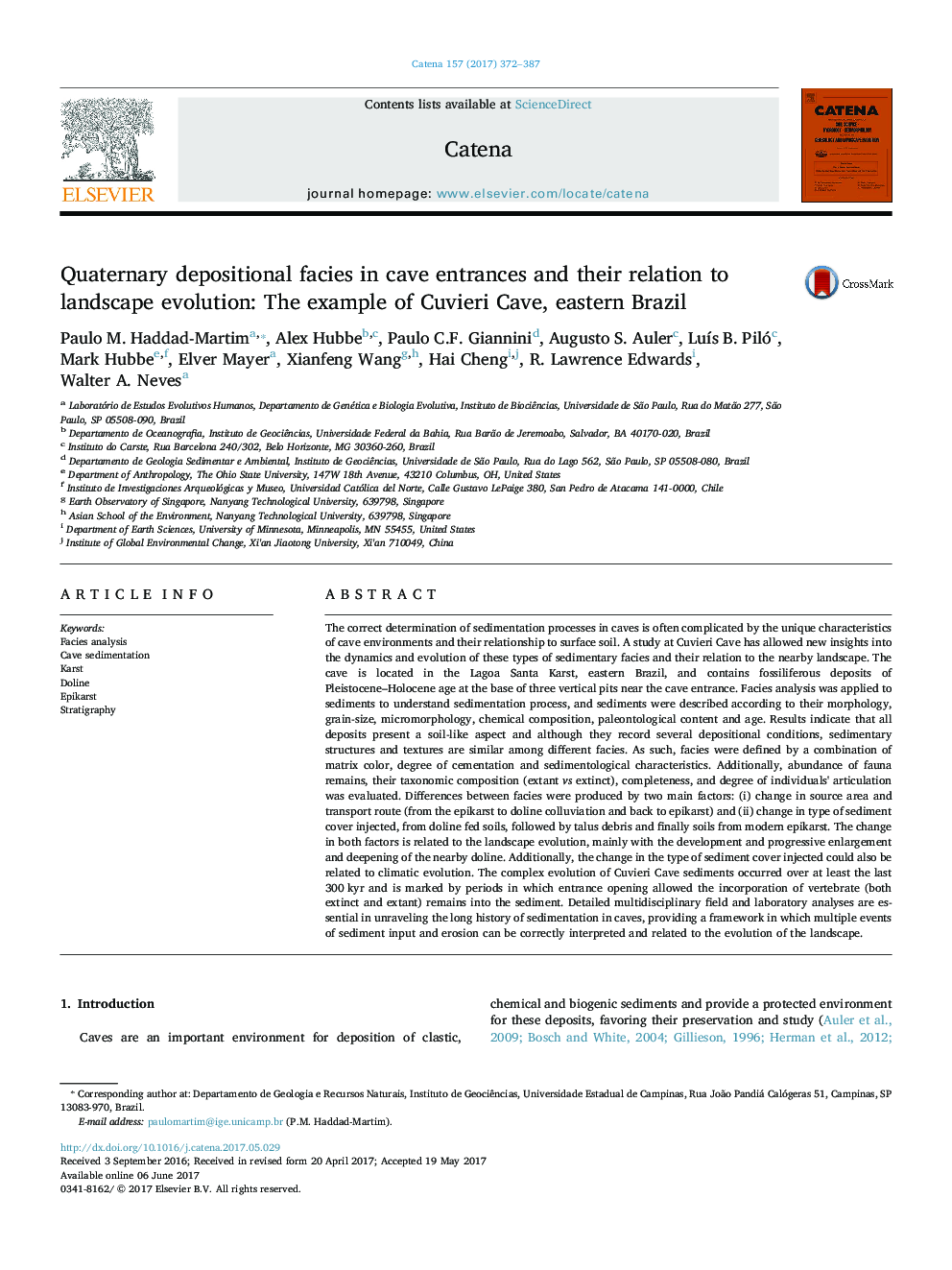| کد مقاله | کد نشریه | سال انتشار | مقاله انگلیسی | نسخه تمام متن |
|---|---|---|---|---|
| 5769874 | 1629197 | 2017 | 16 صفحه PDF | دانلود رایگان |

- Facies analysis was applied in fossiliferous deposits in Cuvieri Cave.
- Low maturity of sediments prevented the use of traditional facies analysis criteria.
- Color and cementation degree were important alternative parameters to separate facies.
- Deposition is related to epikarst seepage and nearby doline development.
- Bones were inserted when large entrances were available for animals to enter the cave.
The correct determination of sedimentation processes in caves is often complicated by the unique characteristics of cave environments and their relationship to surface soil. A study at Cuvieri Cave has allowed new insights into the dynamics and evolution of these types of sedimentary facies and their relation to the nearby landscape. The cave is located in the Lagoa Santa Karst, eastern Brazil, and contains fossiliferous deposits of Pleistocene-Holocene age at the base of three vertical pits near the cave entrance. Facies analysis was applied to sediments to understand sedimentation process, and sediments were described according to their morphology, grain-size, micromorphology, chemical composition, paleontological content and age. Results indicate that all deposits present a soil-like aspect and although they record several depositional conditions, sedimentary structures and textures are similar among different facies. As such, facies were defined by a combination of matrix color, degree of cementation and sedimentological characteristics. Additionally, abundance of fauna remains, their taxonomic composition (extant vs extinct), completeness, and degree of individuals' articulation was evaluated. Differences between facies were produced by two main factors: (i) change in source area and transport route (from the epikarst to doline colluviation and back to epikarst) and (ii) change in type of sediment cover injected, from doline fed soils, followed by talus debris and finally soils from modern epikarst. The change in both factors is related to the landscape evolution, mainly with the development and progressive enlargement and deepening of the nearby doline. Additionally, the change in the type of sediment cover injected could also be related to climatic evolution. The complex evolution of Cuvieri Cave sediments occurred over at least the last 300Â kyr and is marked by periods in which entrance opening allowed the incorporation of vertebrate (both extinct and extant) remains into the sediment. Detailed multidisciplinary field and laboratory analyses are essential in unraveling the long history of sedimentation in caves, providing a framework in which multiple events of sediment input and erosion can be correctly interpreted and related to the evolution of the landscape.
Journal: CATENA - Volume 157, October 2017, Pages 372-387